Amazon Rainforest: The Ultimate Guide to its Wonders and Wildlife
Table of Contents
The Amazon Rainforest: Earth’s Green Lungs
Stretching to cover almost eight different South American countries and spilling out over an astonishing 5.5 million square kilometers, the Amazon Rainforest is the world’s largest tropical rainforest. Known as “the lungs of the Earth” for producing nearly 20% of the world’s oxygen, it forms a decisive role in controlling the Earth’s climate. But its part in oxygen production is only a tiny bit of how important it is—it covers miles of such incredible plant and animal life, many which are unique to the island itself.
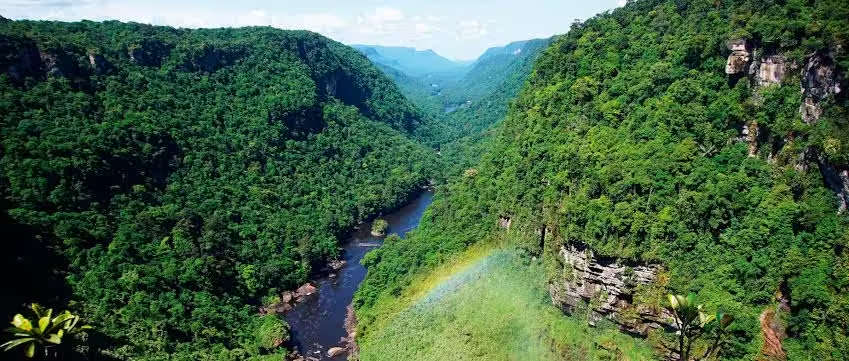
The Amazon is not merely a forest. It forms a living, breathing ecosystem that provides sustenance to millions of species and indigenous peoples for thousands of years. From towering trees to its winding rivers, the Amazon teems with wonders begging to be discovered.
Unraveling the Vastness of the Amazon Rainforest
The Amazon River Basin: A Global Giant
The largest river in the Amazon stretches for more than 4,000 miles through all of the Andes Mountains down to the Atlantic Ocean, thus forming the essential spina of the Amazon Rainforest, which shapes the individual ecosystem of the regions. The Amazon River Basin covers an approximate 40% share of South America and comprises the world’s largest tropical rainforest. This, in turn, supports the vastly diversity-driven existence in this region.

Countries covered by the Amazon Rainforest
The Amazon rainforest spreads over nine countries: Brazil, Peru, Colombia, Venezuela, Ecuador, Bolivia, Guyana, Suriname, and French Guiana. In fact, it is also where the bulk of the region is located; that is, over 60% is found in Brazil. Since the ecosystem or wildlife differs from place to place and climate, each contributes to the rich diversification of the Amazon.

Different Ecosystems in the Amazon
Amazon Rainforest The entire system is, in fact, comprised of several ecosystems related to each other. Each supports distinct plant and animal life.
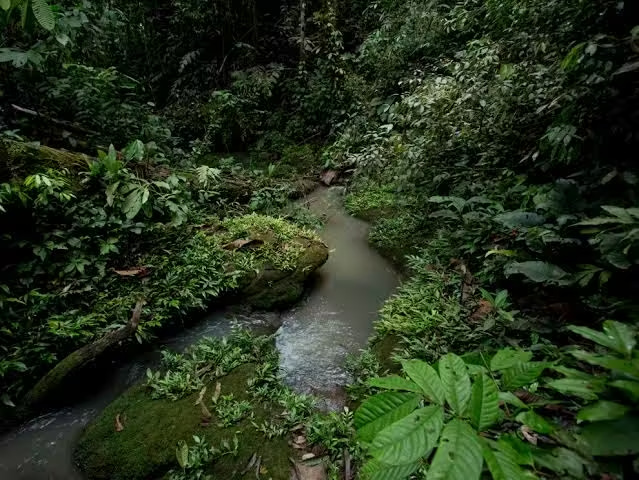
Flooded Forests: The Varzea and Igapó
Heavy rainfall leaves large sections of the Amazon underwater during the wet season. Areas that are always underwater during the dry season and seasonally during the wet season are called Igapó, whereas areas always underwater during the wet season are called Varzea. These unique flooded forest canopies provide a suitable environment for those species with life strategies adapted to periodically waterlogged living conditions. This freely floating food supply is consumed by swimming fish, amphibians, and reptiles. For many aquatic animals, these are ideal breeding grounds.

Terra Firme: The Dry Land of the Amazon
Terra firme forests compose the dry land landscape above the floodwaters of the Amazon. These are the places that stay dry year-round, a stable home for most terrestrial wildlife in the Amazon. Sounds from howler monkeys call through the flapping macaws and rustling jaguar shadows under towering trees and thick undergrowth of the terra firme.

The Towering Canopy and Its Hidden Riches
Giant Trees: The Titans of the Rainforest
It has one of the largest canopies – at some points reaching 60 meters-high and forming a dense roof over the rainforest floor. The highest reaches of this jungle are often occupied by the largest trees, which include the kapok and Brazil nut tree, providing critical habitats for birds, insects, and mammals. These massive trees really play an important role in capturing carbon and regulating the Earth’s atmosphere.
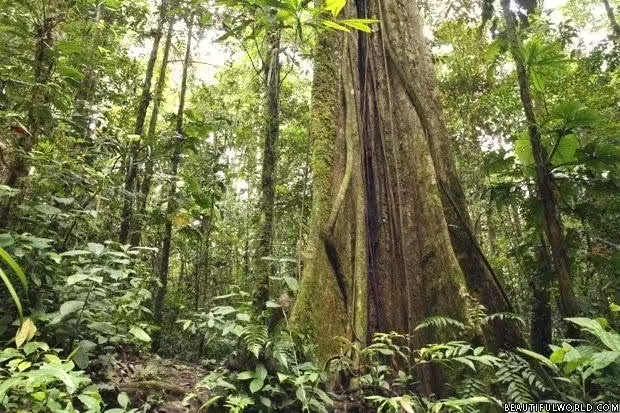
Medicinal Plants: The Pharmacy of Nature
Most of the plants of the Amazon represent more than just their beauty-they are priceless to mankind as far as health is concerned. The forest often lives by the name of “nature’s pharmacy” because many modern medicines are found in its plants. Quinine, a cure for malaria, and curare, a muscle relaxant, are but few examples of life-saving drugs developed from the rich plant life found in the Amazon. For centuries, these and many more plants have been used by the natives to cure ailments. Modern science is constantly discovering new medicinal uses from the flora of the rain forest.
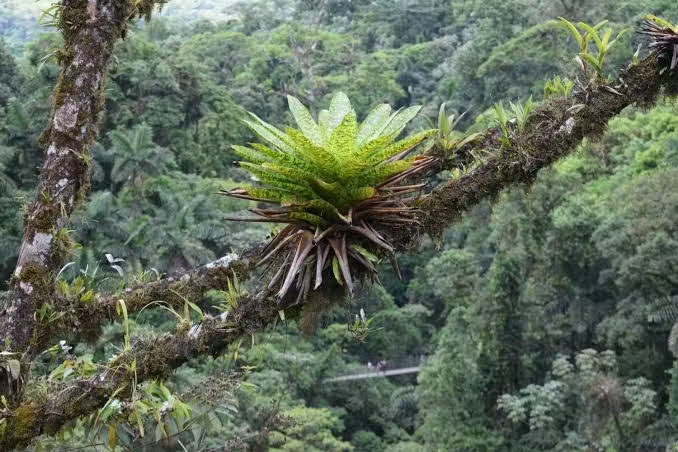
The Amazon’s Diversity of Plant Life
Bromeliads and Epiphytes: Plants that Grow in the Air
The most interesting things about Amazon plants are bromeliads and epiphytes, which grow on other trees without hurting them. They gain moisture from the air and nutrients from decaying leaves. Then, there are the brightly colored flowers of the bromeliads that provide minuscule ecosystems for little frogs, insects, and even small birds to take shelter in.

The Iconic Amazon Water Lily: The Giant of the River
One of the most popular Amazonian plants is the giant water lily, Victoria amazonica, with leaves that are over two meters in diameter. Floating on top of the water, their leaves create a self-contained microecosystem within the water, with fish, amphibians, and insects inhabiting and interacting with this water surface.
White and pink flowers bloom by night and wilt during the day, drawing pollinators, such as beetles.

Wildlife in the Amazon Rainforest
The Amazon contains over 10 percent of the known species around the world. From the unseeable jaguars to the frolicking river dolphins, this is a kaleidoscope of bird and animal life.

Birds of Paradise: The Avian Wonders of the Amazon
The Colorful Forest Guard: Macaws
Of all the famed birds of the Amazon, there is perhaps no more striking a bird than the macaw. Their bright coloring, their loud callings, and their formation flying in pairs or flocks make them easily heard and seen. One of the most celebrated forms is the scarlet macaw, with its bright red, yellow, and blue plumage. These highly intelligent birds are very important to seed dispersal, maintaining the health of the rainforest.

The Harpy Eagle: The Apex Predator of the Canopy
Regarding the harpy eagle, it is the largest as well as the most forceful of the birds of prey in the Amazon. Provided with talons similar to those of a grizzly bear, it can indeed seize a monkey or sloth from its tree perch with ease. Its status as one of the top predators serves to maintain the balance of the ecosystem.

Animals of the Amazon: Jaguars to Sloths
The Magnificent Jaguar: The Sly Predator
Jaguar is the best predator of the Amazon and one of the most mysterious animals in the jungle. Characterized by strength and stealth, it hunts nocturnal and attacks anything crossing its way from deer to caimans. An isolated creature that symbolizes wildness and power of the Amazon.

Slow-moving Sloth: an Amazing Master of Camouflage.
Slow-moving sloths do not really run, but they are very good at survival. The slow pace lets predators almost miss them while passing by, and their fur covered in algae makes the best camouflage in the forest canopy. Sloths spend nearly all of their time hanging upside-down in trees, only going down once a week to relieve their bowel movement.
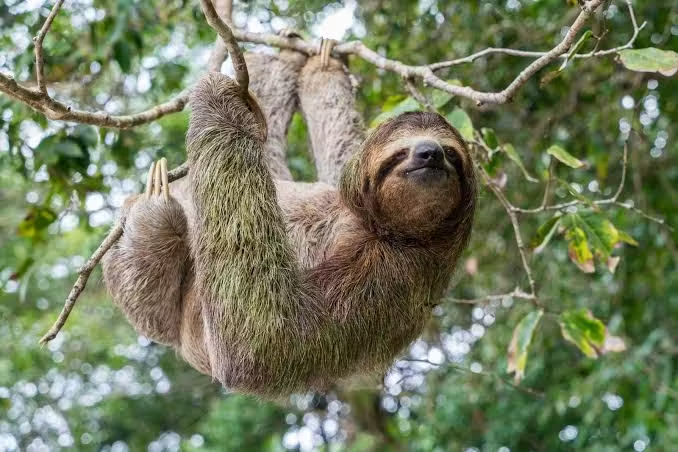
Reptiles and Amphibians: Masters of Stealth
The Anaconda: The Amazon’s Largest Predator
The green anaconda holds the title of the heaviest snake species in the world. The snake hides in rivers and swamps of the Amazon. It’s a sneak ambush predator, often reaching 30 feet in length and accustomed to slaying capybaras and even jaguars.

Poison Dart Frogs: Little but Deadly
Brightly colored and small, these frogs are some of the most poisonous creatures in the Amazon. Traditionally, many indigenous tribes have used their poison to poison blow darts for hunting purposes. The frog size is perhaps not so vital, but they are an integral part of the food chain in the Amazon, ensuring that insect populations do not go rampant.

Fish and Aquatic Life of the Amazon
The Pink River Dolphin: A Rare Freshwater Species
One of the most unique animals to be found in the Amazon is the pink river dolphin. Intelligent, very social creatures are characteristically seen swimming around in the rivers and tributaries of the many streams that run through the Amazon. Unlike their counterparts from the sea, they have adapted themselves to life in the river’s dirty waters and easily swim through the flooded forests.
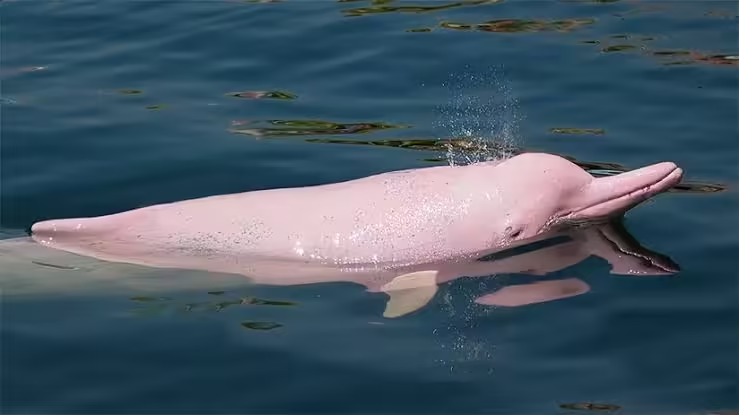
The Fearsome Piranha: Myth vs. Reality
Probably among the most misunderstood creatures of the Amazon, piranhas have had their sharp teeth and voracious appetites sensationalized in popular culture. As an integral part of keeping the river’s ecosystem healthy, piranhas feed on dead or dying animals, as opposed to attacking large mammals or humans, which is how they are often depicted.

Insects of the Amazon: Small Creatures, Big Impact
Leafcutter Ants: Nature’s Tiny Farmers
One of the most energetic beasts seen in the Amazon is probably the leafcutter ants. These cut leaves and carry them back into their nests, where they cultivate a fungus, one of their principal food sources. Their multiple societies and farming methods are a testament to the incredible adaptability of life in the Amazon.
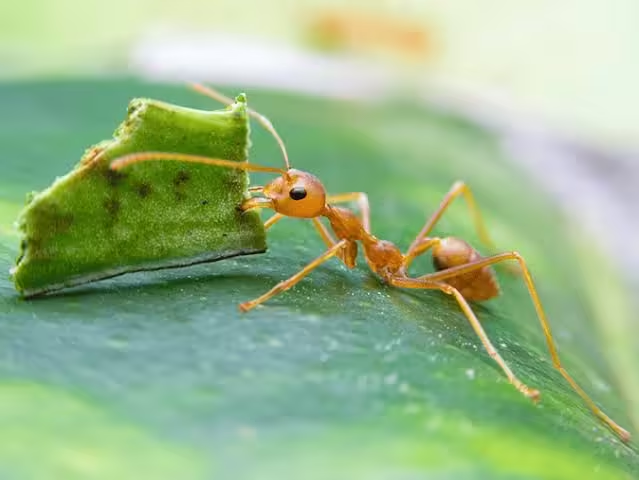
Amazon Butterflies: Colours of Life
Above 7,000 species of butterflies are found in the Amazon-from the iridescent blue morpho to the transparent glasswing. Butterflies form the kaleidoscope of colors adding an extra effect to the rainforest ecosystem. They play an important role in pollination and thus have a considerable portion in the food web of the Amazon.
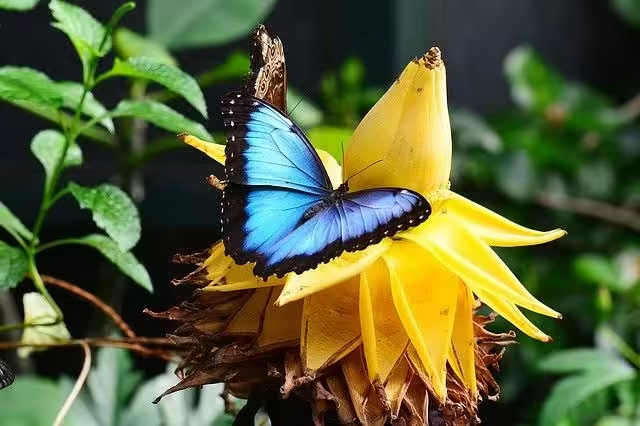
The Amazonian Indians
The Yanomami: The Forest Guardians
The Yanomami are one of the largest indigenous groups within the Amazon. They live in rainforest near the border of Brazil and Venezuela. For thousands of years, the Yanomami have been living inside the Amazon region, thriving sustainably and harmoniously within their environment. Now they are struggling against deforestation and illegal mining, but so far remain devoted to land and culture defense.

The Kayapo People: A Culture Intertwined with Nature
One such tribe is that of the Kayapo, in Brazil, constructed in an effort to seek an essentially solid cultural heritage along with a form of environmental activism. They have successfully repelled the incursion of big parts of the Amazon, thus forming as symbols of resistance and watchdogs of the rainforest.

The Challenges Confronting the Amazon Rainforest
Deforestation: The Gradual Disappearance of the Amazon
Perhaps the biggest threat to the Amazon is timber extraction, agriculture, and cattle ranching, responsible for the yearly removal of vast swaths of the rainforest. This loss threatens biodiversity but actually causes an acceleration in climate change because the trees of the Amazon absorb carbon dioxide.
Climate Change: How Global Warming Affects the Amazon
But climate change is having profound effects on the Amazon. Increased temperatures and altered rainfall regimes have resulted in longer spells of drought that have weakened the stability of this system. As the Amazon dries, it opens itself increasingly to fires that only hasten its demise.

Saving the Amazon: An International Issue
Protected Areas and National Parks
In addressing the issue of deforestation and other factors, many countries within the Amazon region have initiated protected areas and national parks. Protected areas promote the preservation of biodiversity while creating a safe haven for endangered species.
International Cooperation and Local Initiatives
The protection of the Amazon is an international endeavor, where international organizations, the government, and locals all contribute together so as to reduce the rate of deforestation and enhance sustainable activities. A reforestation project is vital in the protection of the Amazon for future generations, and indigenous land rights movements.
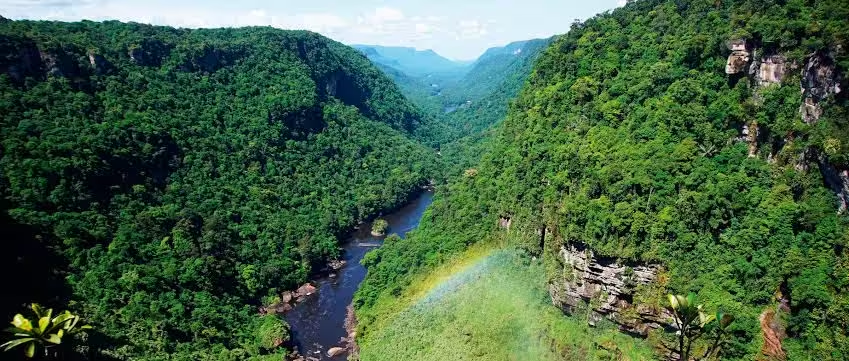
The Future of the Amazon Rainforest
The Amazon Rainforest stands as one of the world’s natural treasures the Earth can ill afford to lose. Having endless biodiversity, cultural importance, and regulation of the climate on Earth, it remains one of the world’s most crucial ecosystems. Protecting the Amazon will be a concerted effort from all around the world. Through action taken at the grassroots-not to mention a concern for sustainability-we will guarantee that this incredible rainforest continues for future generations.
FAQ’S
Why is it referred to as “the lungs of the Earth”?
The name of the Amazon was given to it to term it, the lungs of the Earth, because it produces nearly 20% of the world’s oxygen, thus adjusting the conditions of the Earth’s atmosphere worldwide.
How many species are there in the Amazon Rainforest?
There are an estimated 400 billion single trees, 16,000 tree species, and over 2.5 million insect species in the Amazon. Of the total forest mammals, there are approximately 400 species of mammals, 1,300 bird species, 3,000 fish species, and 40,000 plant species.
What are the most significant dangers facing the Amazon Rainforest?
The six leading menaces to the Amazon are deforestation, illegal logging, mining, agriculture, cattle ranching, and climate change.
Is it possible for a tourist to visit the Amazon safely?
Yes, there are visitors to the Amazon, many of them on guided eco-tours. Ecotourism that supports local communities and conservation can be a way of saving the rainforest.
What is the role of the indigenous tribes in conserving the Amazon?
While indigenous tribes protect their native forest by not deforesting their areas and thus maintaining ancient sustainable practices that have kept the forest thriving for thousands of years, many indigenous tribes are also environmental activists in protecting the Amazon against modern-day threat.




